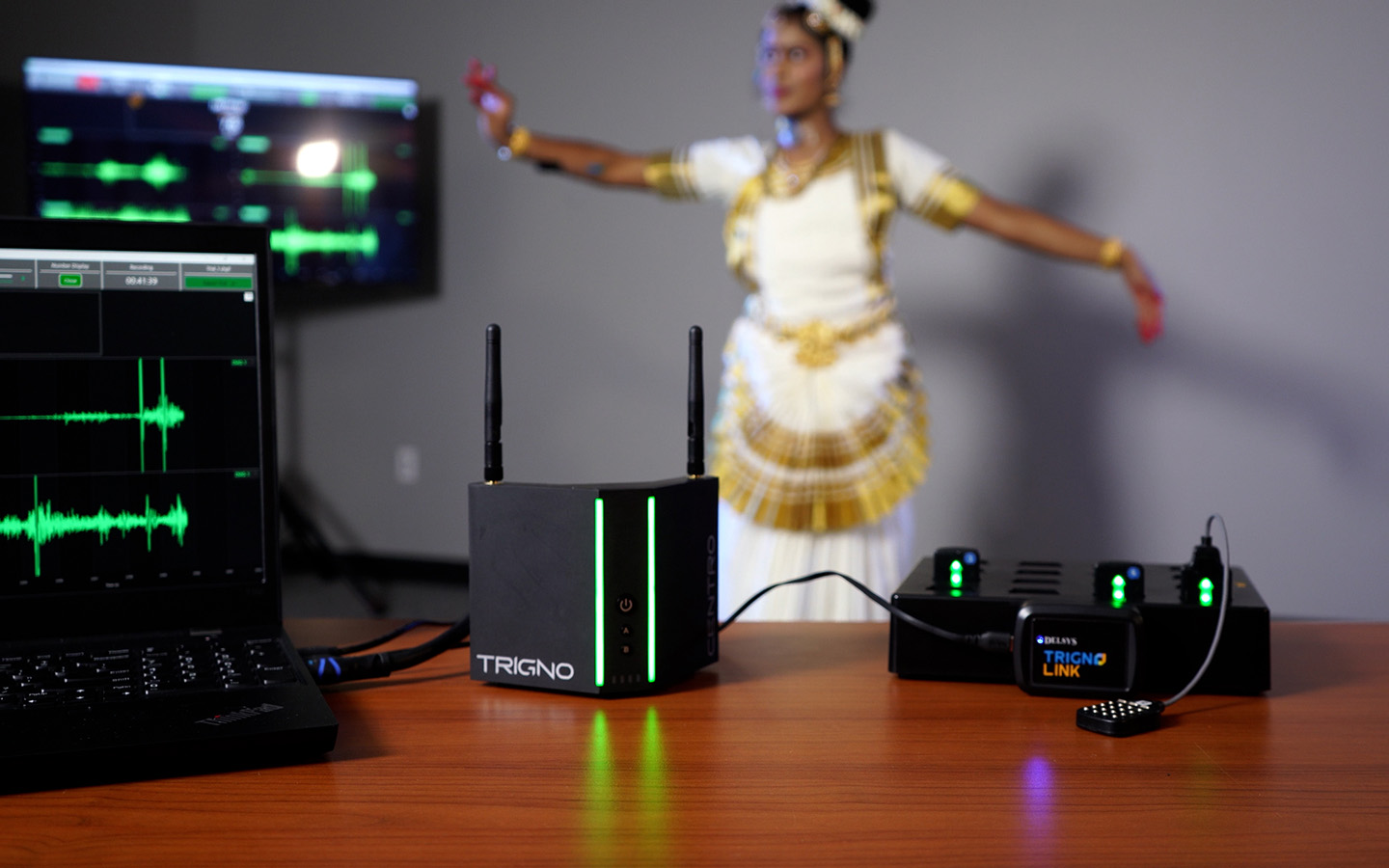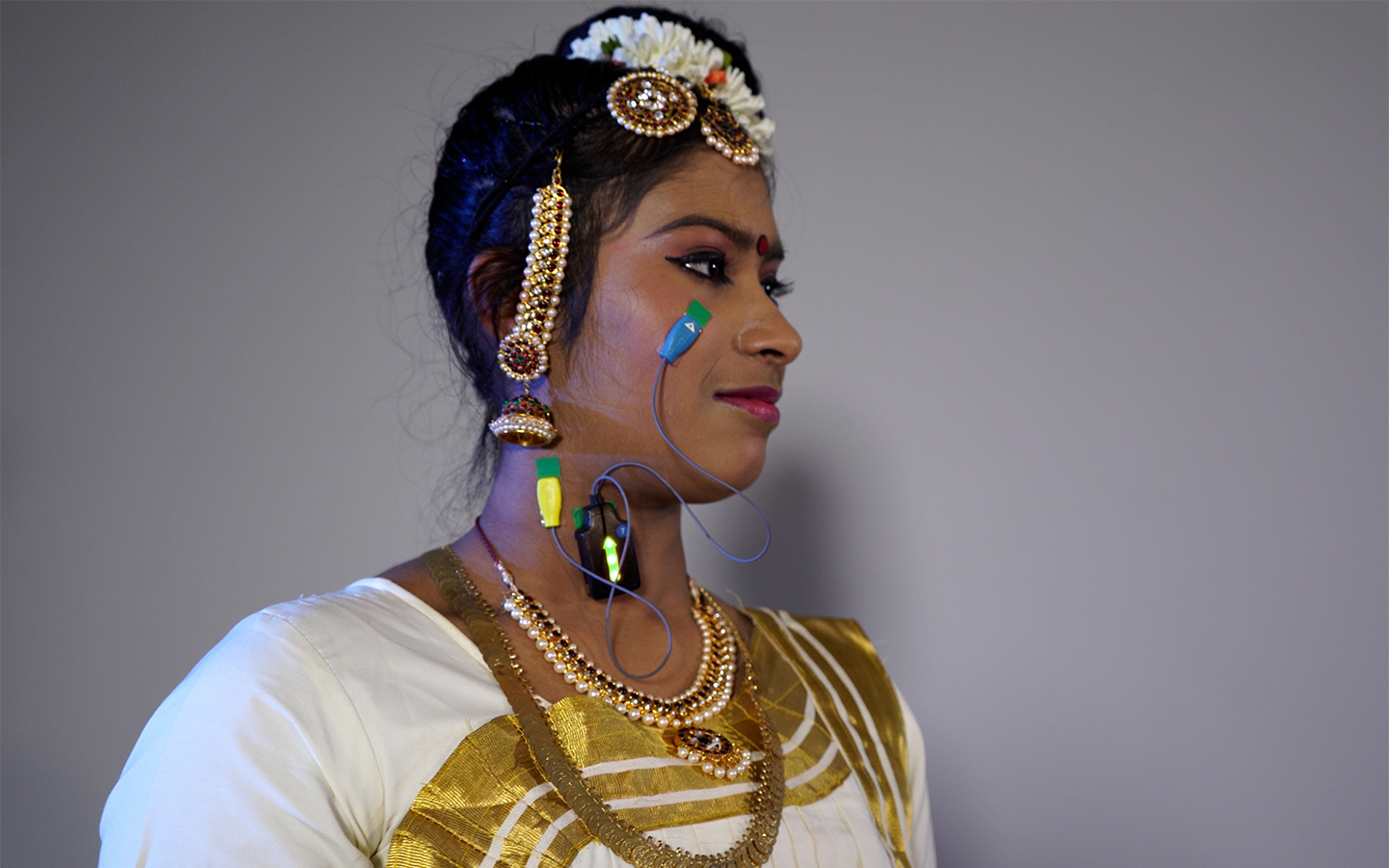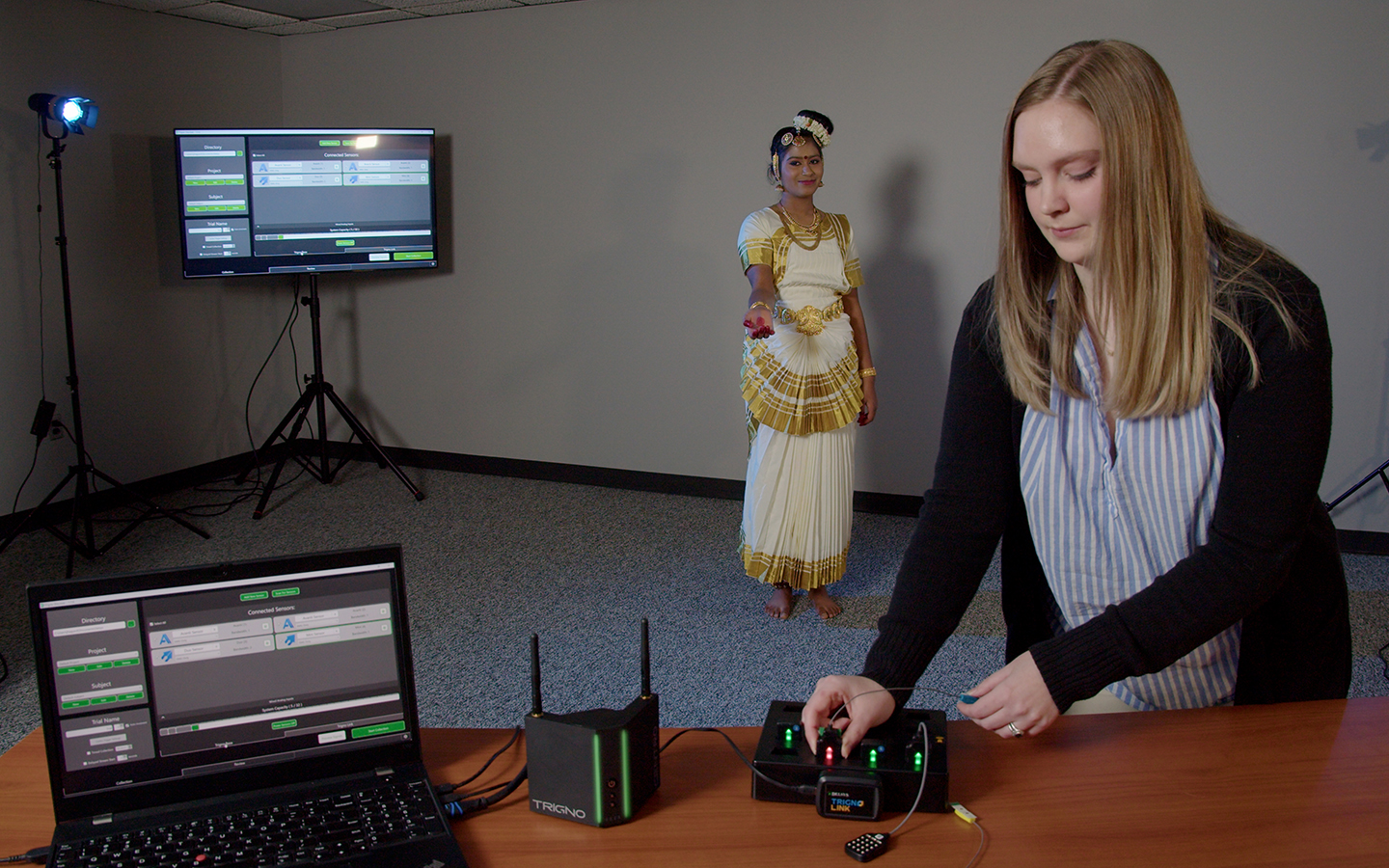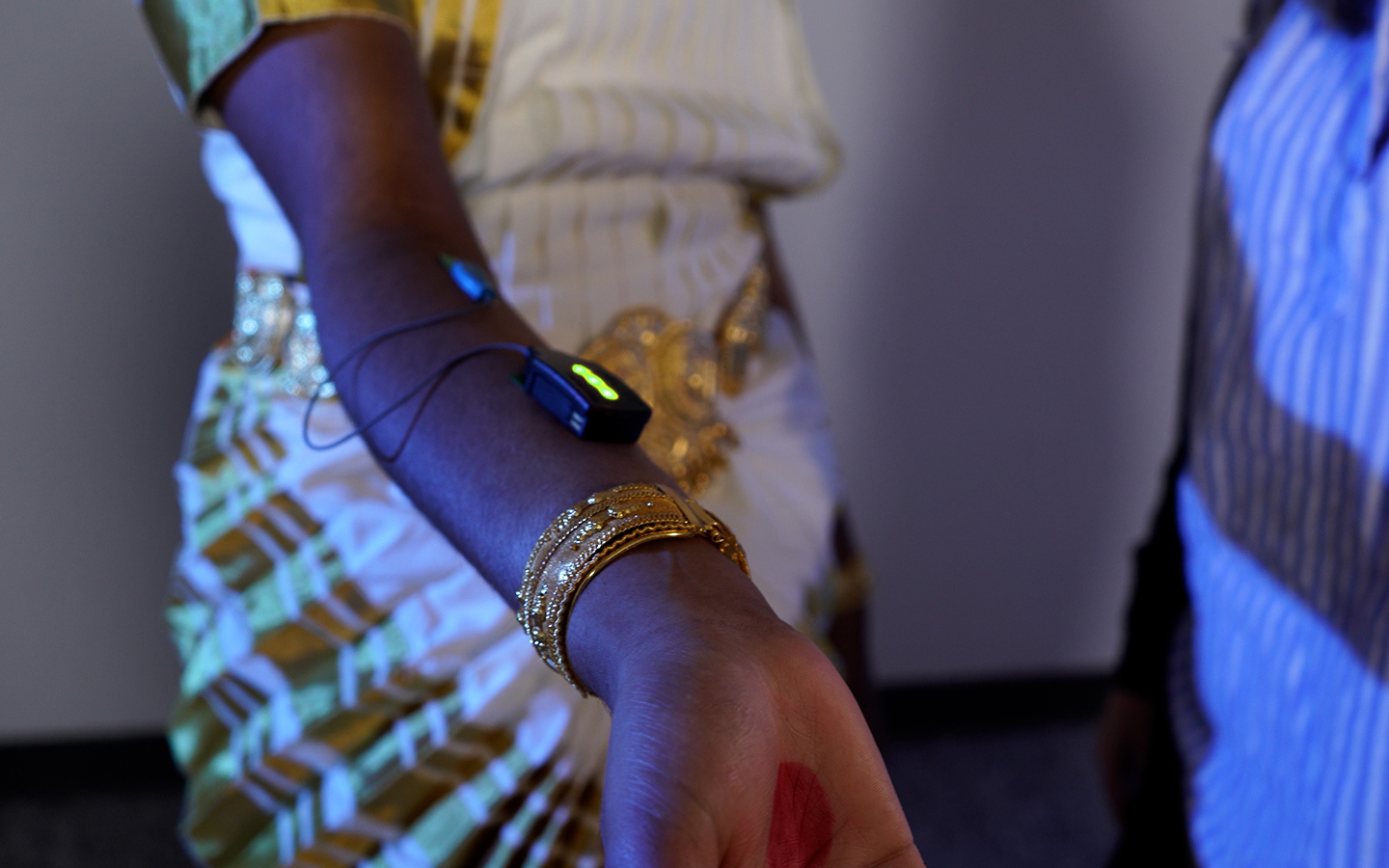Biomechanics is the science of movement and provides rich detail into how forces control the way our bodies move. Biomechanics has been used for the analysis of sports for decades and has been mostly employed in activities where technique is the primary factor. Dance is one of the sports that has leaned heavily on biomechanics to understand the science of movement.
Traditionally, biomechanics has been used for inform dance and performance for the following reasons:
Supriya Nair, a sophomore student at Stanford Online High School, has now brought the concept of biomechanics to her dance form of Mohiniyattam. Mohiniyattam is a classical dance form that originated in Kerala, India and is often characterized by graceful, swaying movements, soft footwork, important hand gestures, and subtle facial expressions.
For National Biomechanics Day, we invited Supriya to share her experiences of combining biomechanics with Mohiniyattam for what she has termed as “Neuroyattam”.

EMG is an experimental technique that allows a unique insight into muscle co-ordination, motor control, and muscle effort.
National Biomechanics Day has always been about increasing the visibility of emerging fields for the application of biomechanical principles.






